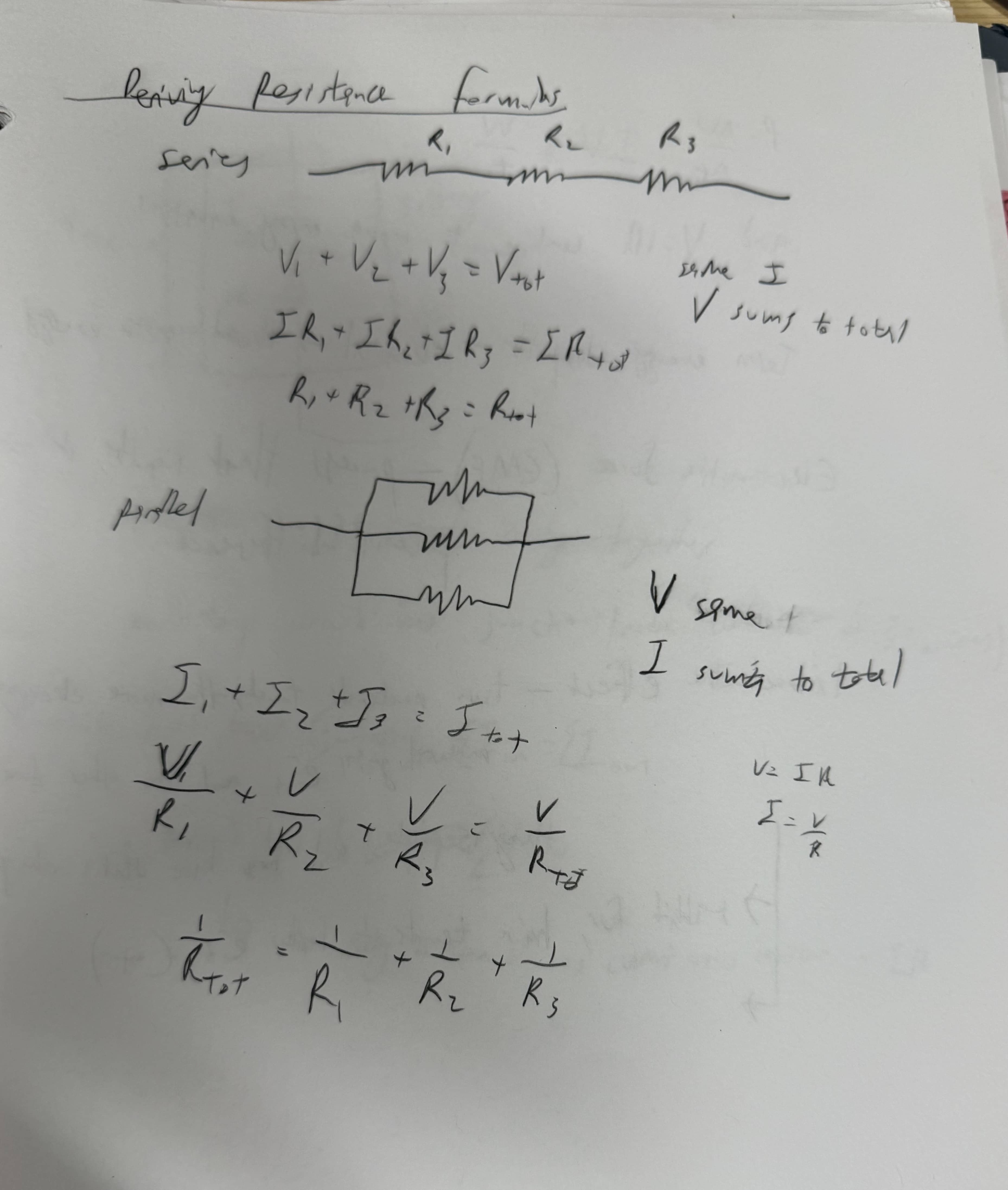Electricity & Magnetism
I learned about electricity and magnetism in spring quarter of freshman year in Physics 43: Electricity and Magnetism
- works for charging and recharging RC circuit
-
Electric field energy density ::
-
Magnetic field energy density
-
Lorentz force
-
Maxwell's Equations
- Gauss' Law
- LHS is the electric flux
- Gauss' Law for magnetism
- In other words, there are no magnetic monopoles
- Faraday's Law of Induction
- A changing magnetic field produces an e-field
- Ampère–Maxwell Law where displacement current results from a changing E-field
- A changing e-field produces a magnetic field
- Gauss' Law
-
Circuits
- Time constant τ tells you how long it takes for the current to reach 63.2% of its final value
-
Right-hand rules
- Current-carrying wire's magnetic field: point thumb in wire current's direction, fingers curl around in the direction of the B-field lines
- Solenoid: curl fingers in the direction of the current in the solenoid, thumb points in direction of B-field
- For cross-product in (force on particle from B-field) and (force on a wire with current I from a B-field)
Equation Sheet
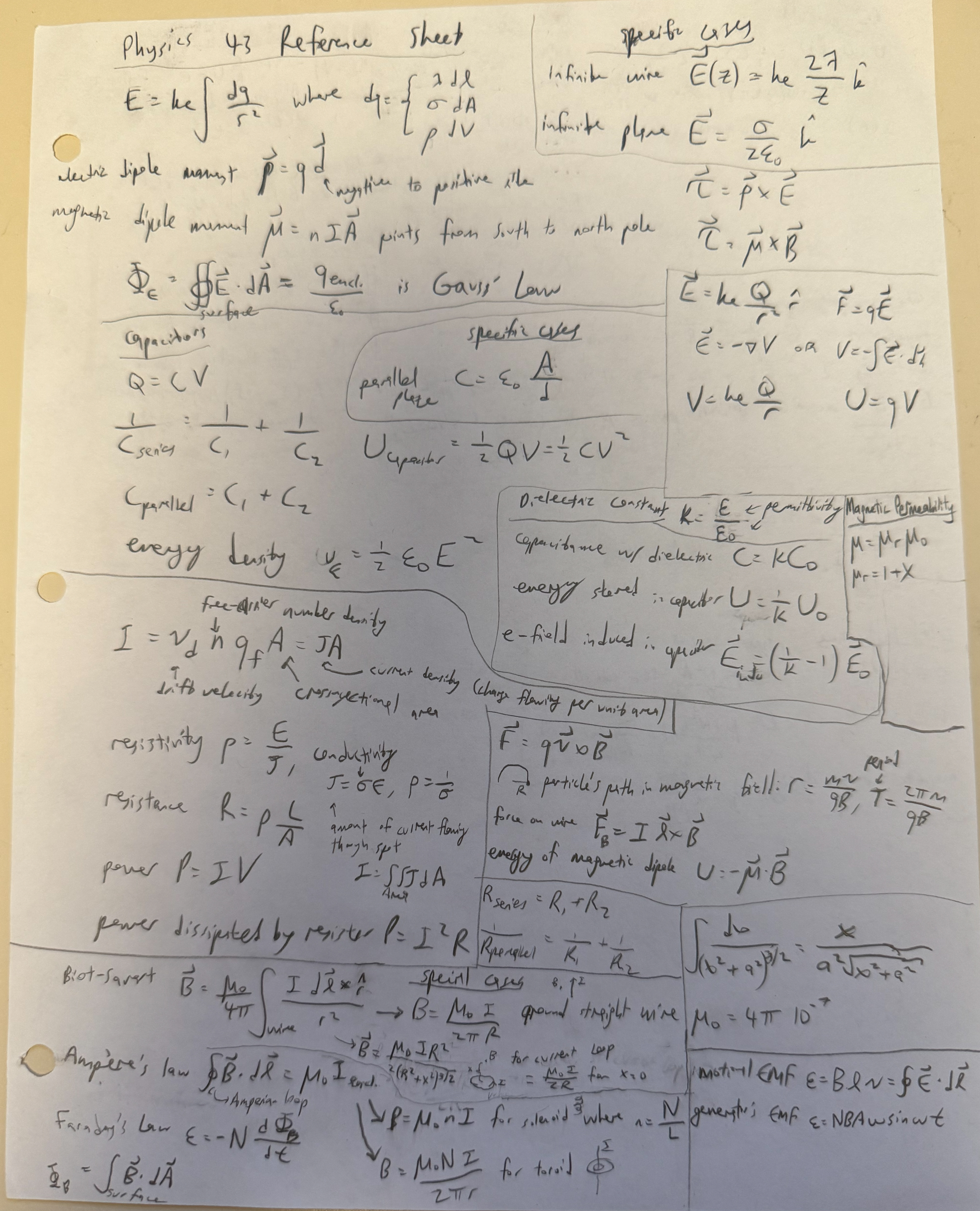
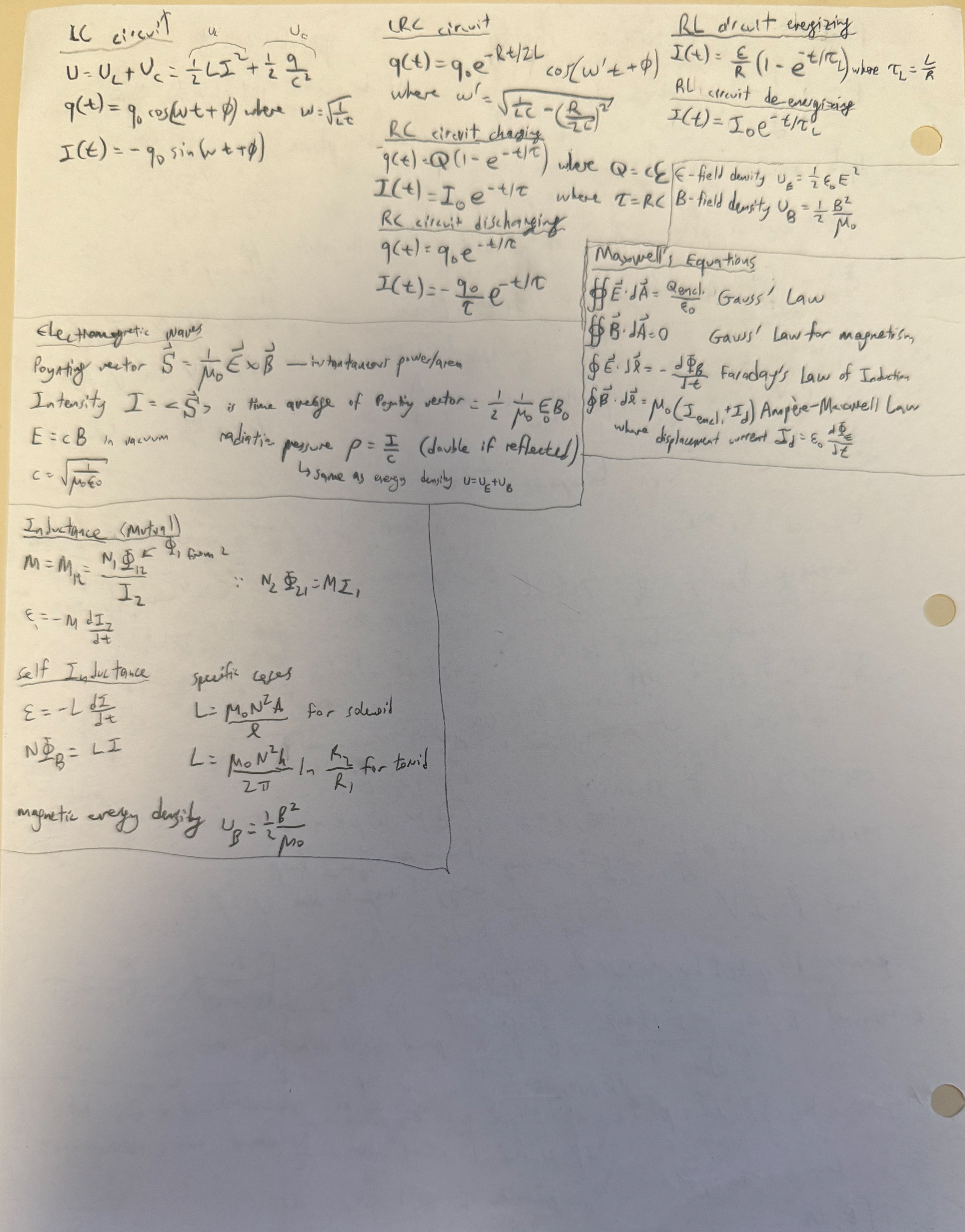
Class Equation Sheet
Magnetism
- irradiance - energy÷area received on surface ()
- AKA radiant flux density
- solar constant - 1 kW/m³
- luminosity - rate of emission of radiation :: W
- 3E26 is solar luminosity
- Electromagnetic waves
- Not exactly understood but taken for granted
- in a vacuum
- energy density
- Time average operator <>
-
- wave number
- Poynting vector - instantaneous rate of energy transfer per area per time (energy/area/time), power/area
- Intensity is the time-averaged value of the Poynting vector
- Radiation pressure
- It is if reflecting
- pressure - force per area
- intensity - power per area

- Not exactly understood but taken for granted
- Waves in general
- Period T - time taking for a wave to complete one full cycle (crest to crest or trough to trough)
- Frequency :: Hz = - how many waves pass through a point for unit time
- Wavelength - length of the wave
- An electron has a magnetic dipole of 1 Bohr magneton
-
- A material's relative magnetic permeability
- where is the permeability of the material and is the permeability of free space, which is
- <1 for diamagnetic
- >1 for paramagnetic
- for ferromagnetic
- Magnetic susceptibility
- A material's relative magnetic permeability
- Types of magnetism
- Diamagnetism - repel, temporary
- Material create weak repulsive force when placed in a magnetic field because the atoms' paired electrons have an induced current which changes their magnetic moments
- Always there for all materials
- Diamagnet: water, levitatingSoft frogs
- Paramagnetism - attract, temporary
- Materials are weakly attracted. Too weak to pick up the material against its weight.
- Atoms are magnetic because of unpaired electrons but in random orientation. Putting them in a magnetic field aligns them, so they are attracted toward the magnet
- Paramagnet: aluminum
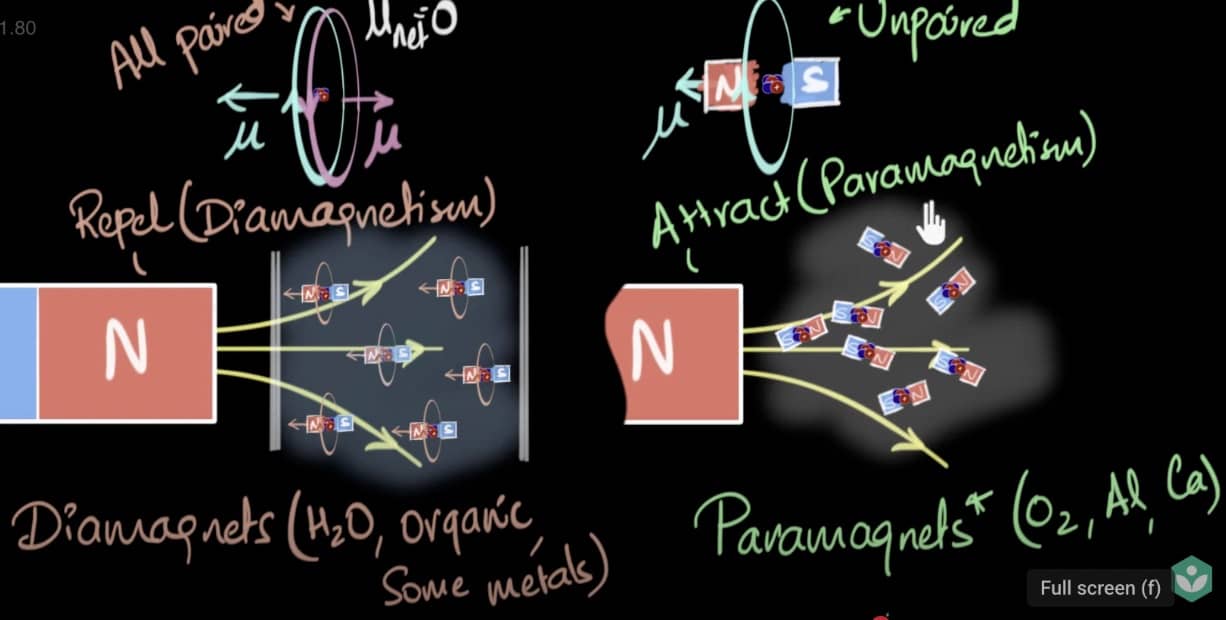
- Ferromagnetism - attract
- Magnetic domains (particles within a domain have the same alignment) which get aligned
- Magnetize - make the domains align
- Hard magnets - without external magnet, stay aligned
- Soft magnets - do not retain magnetization when removed
- Curie temperature - the temperature at which ferromagnetism stops working because there is too much heat energy which the magnetic alignment forces can't overcome
- Ferromagnet: iron, cobalt, nickel
- Diamagnetism - repel, temporary
- Terminal voltage
- More current drawn → lower terminal voltage
- Battery EMF - internal voltage inside the battery, which includes an internal resistor
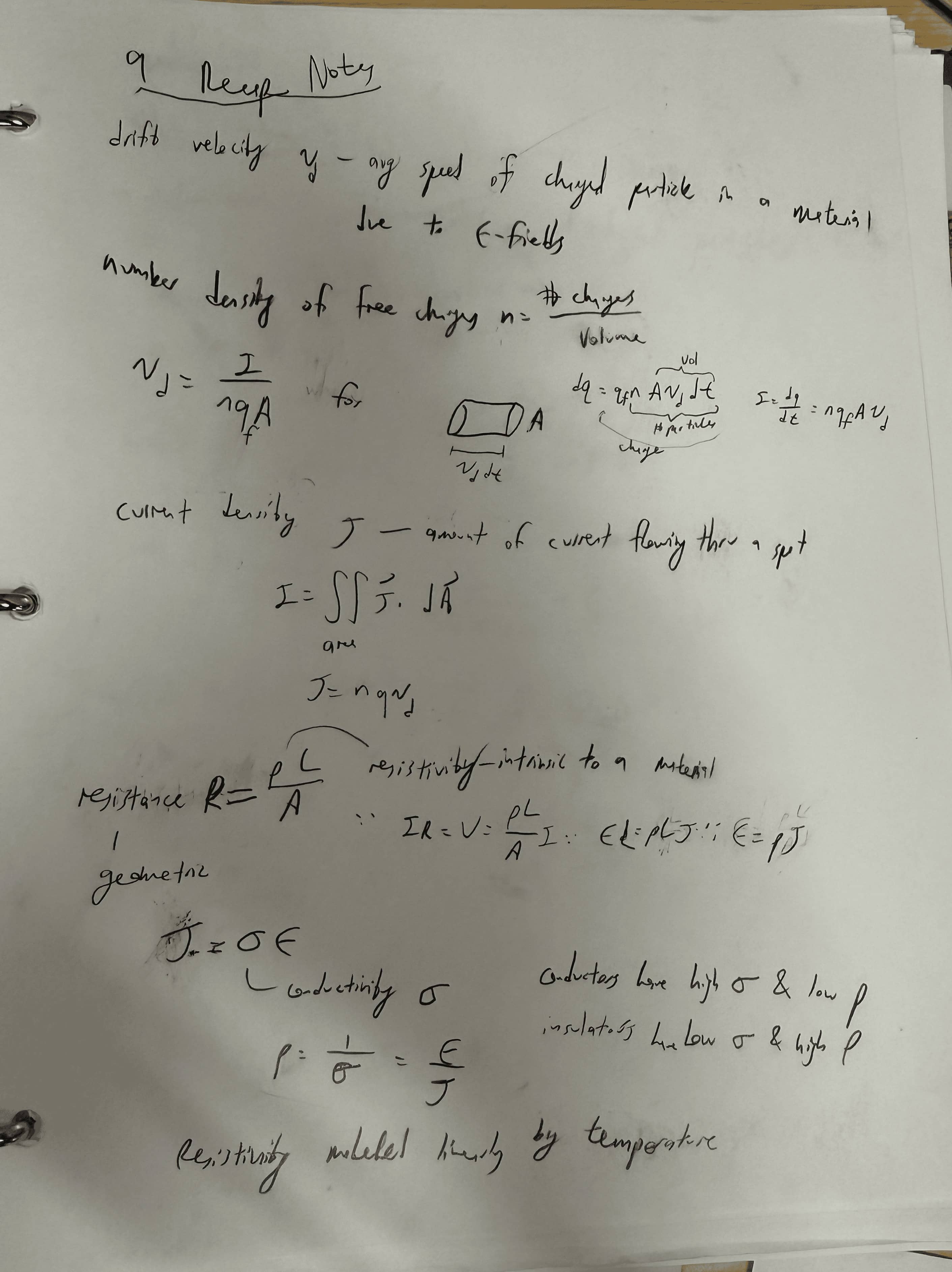
Dielectrics
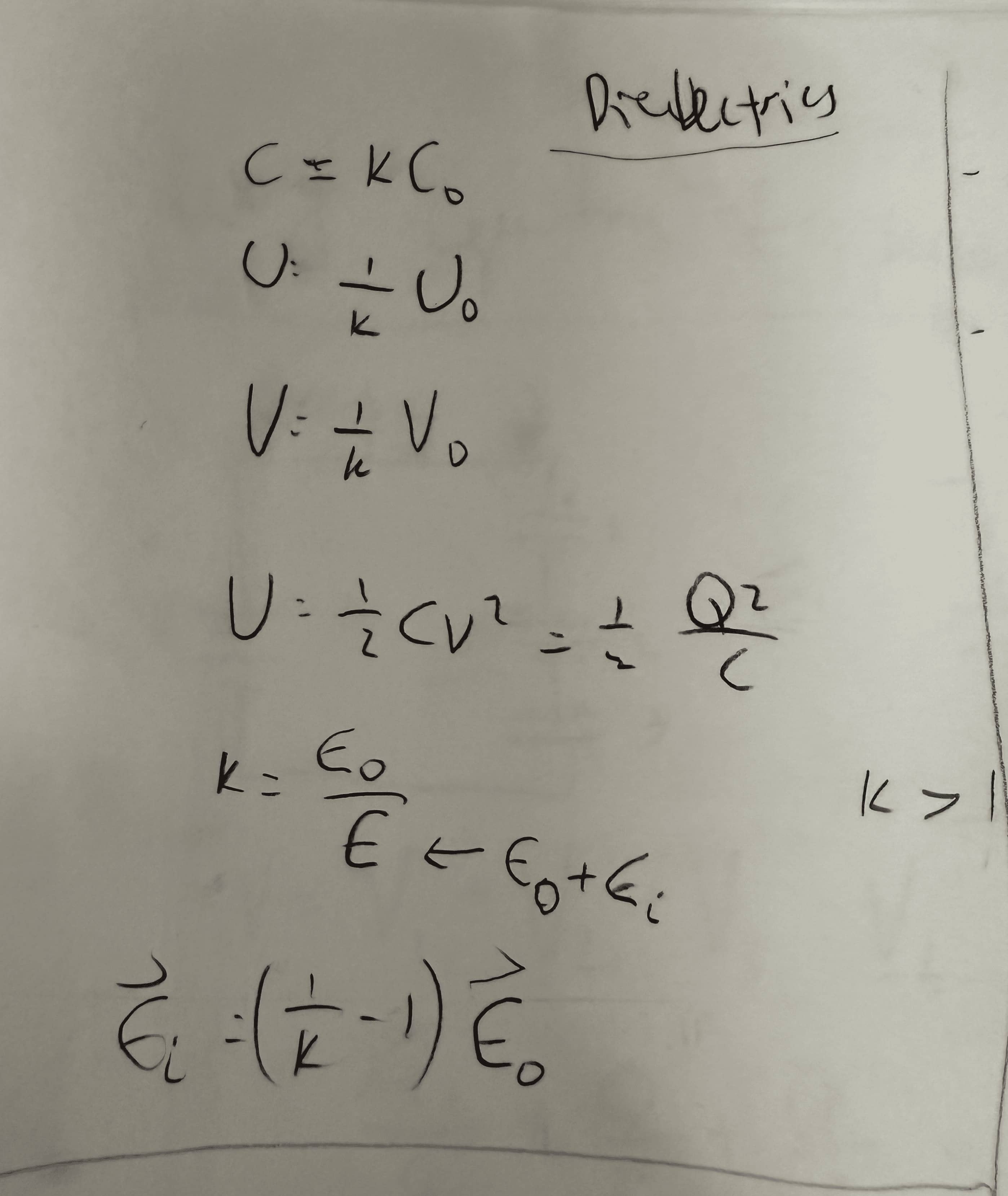
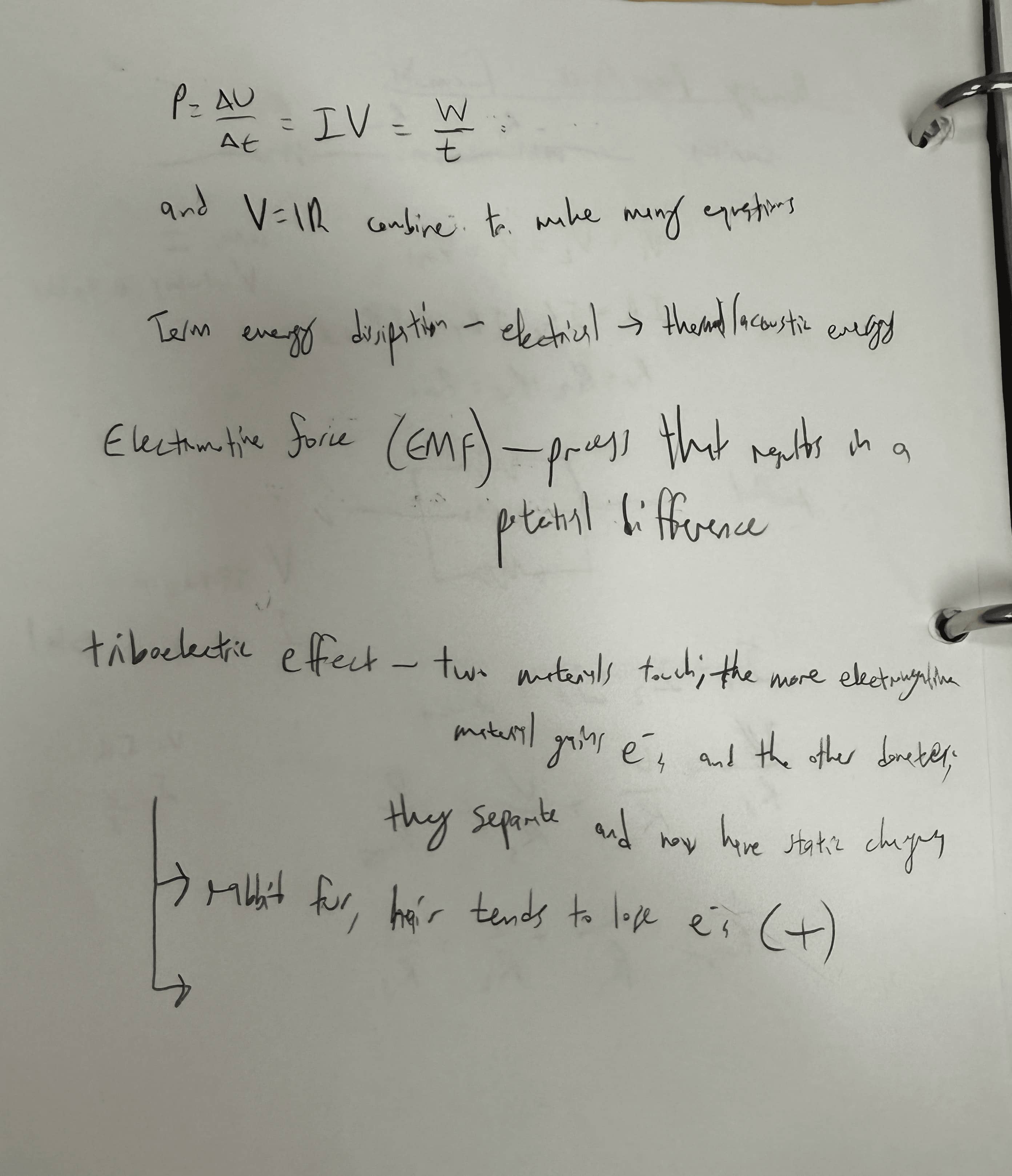
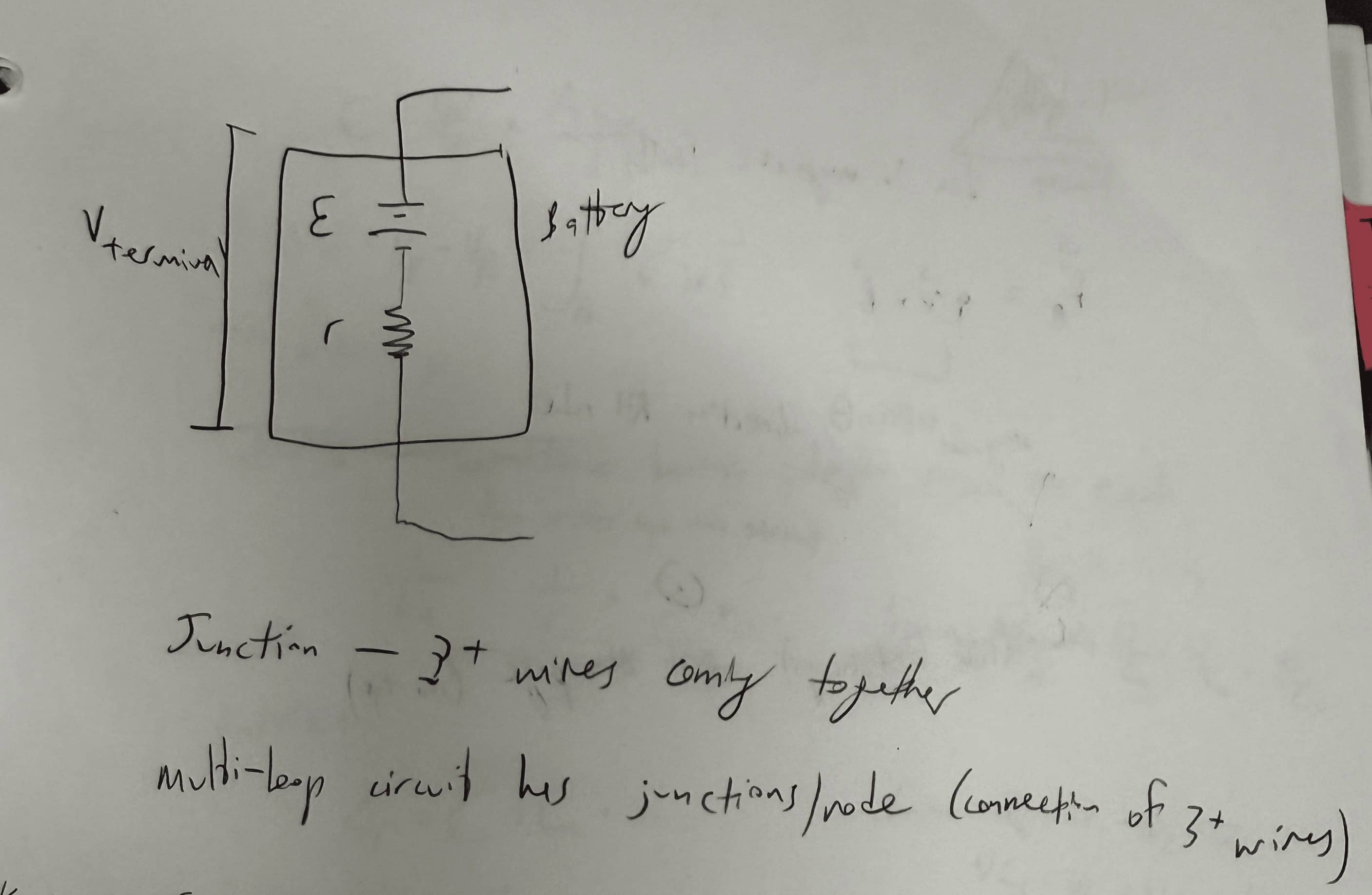
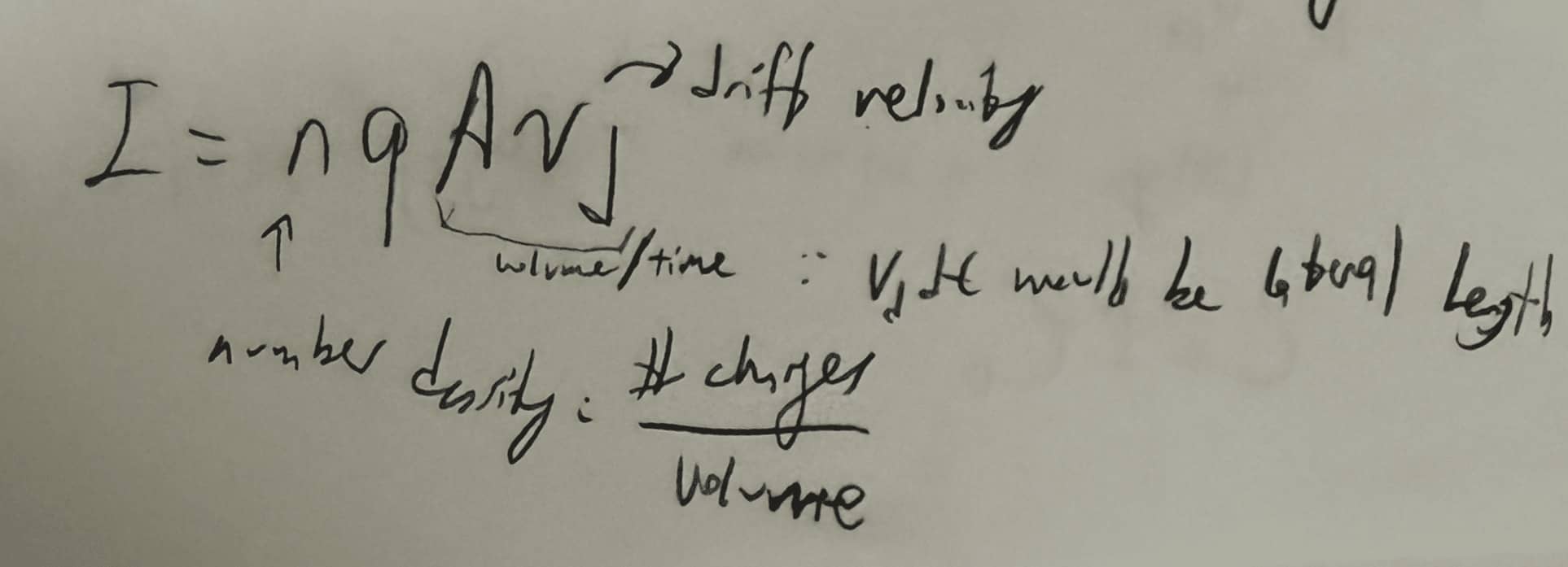
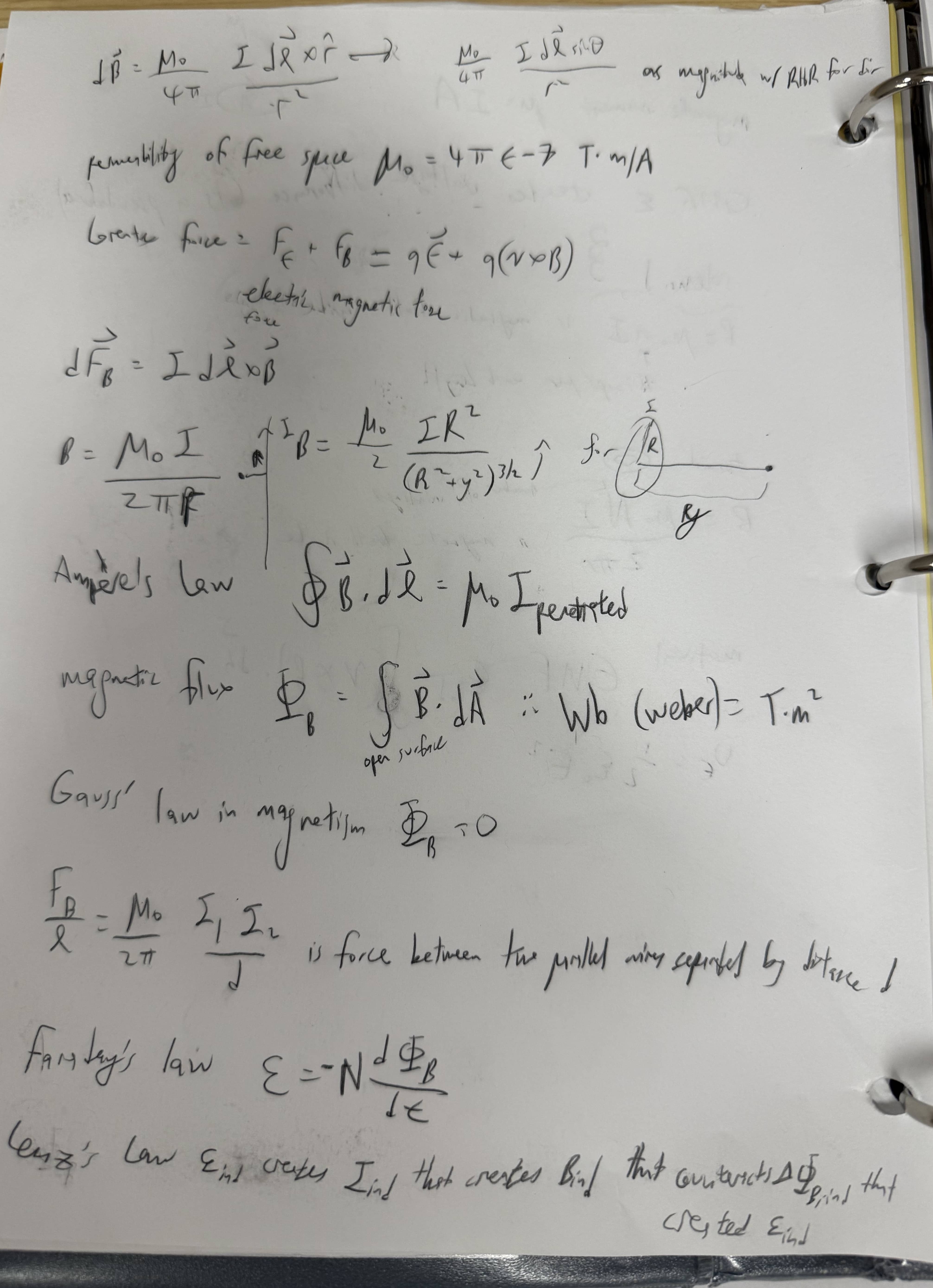
Derivations
Deriving LR Circuit
Charging
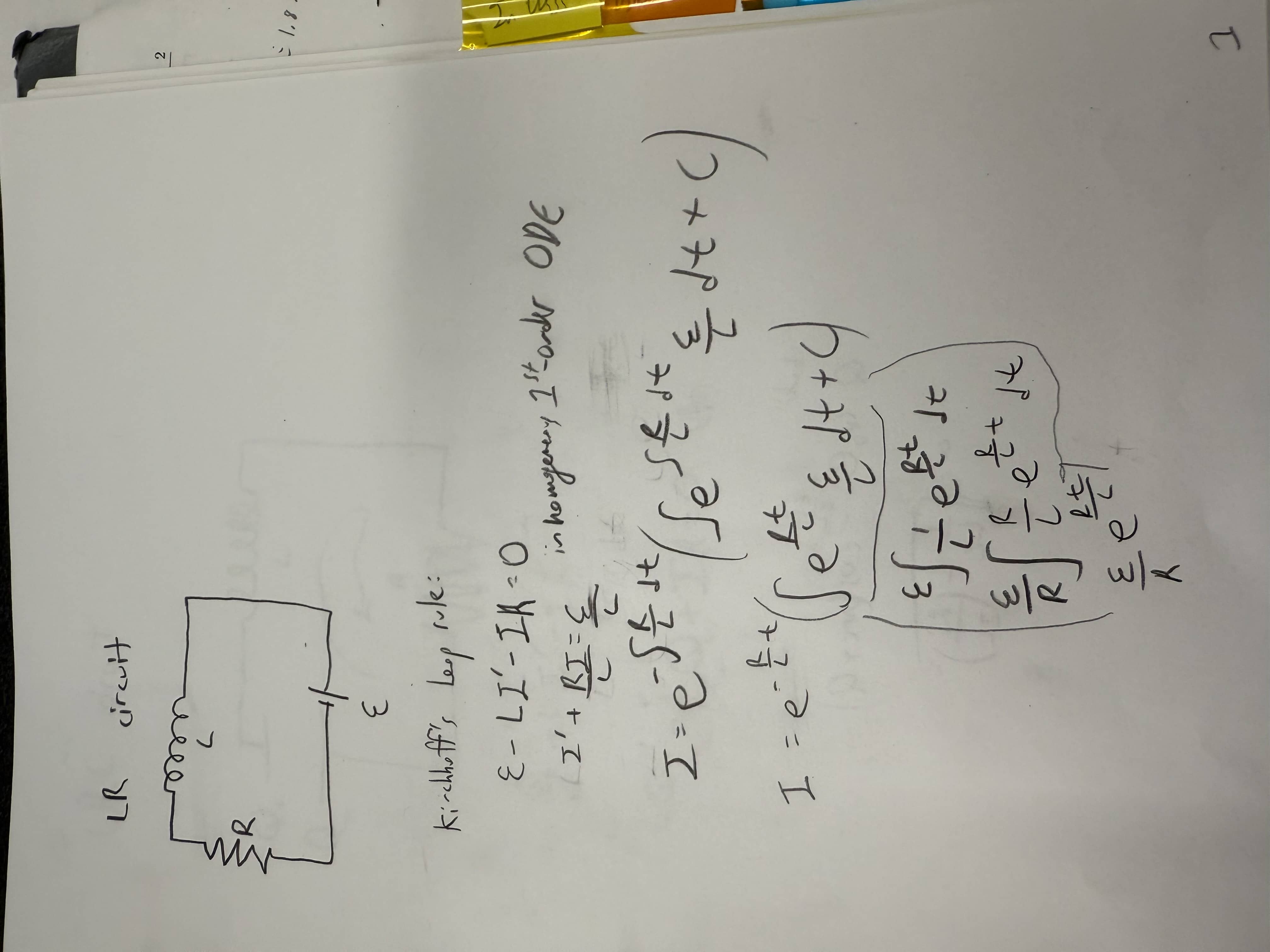
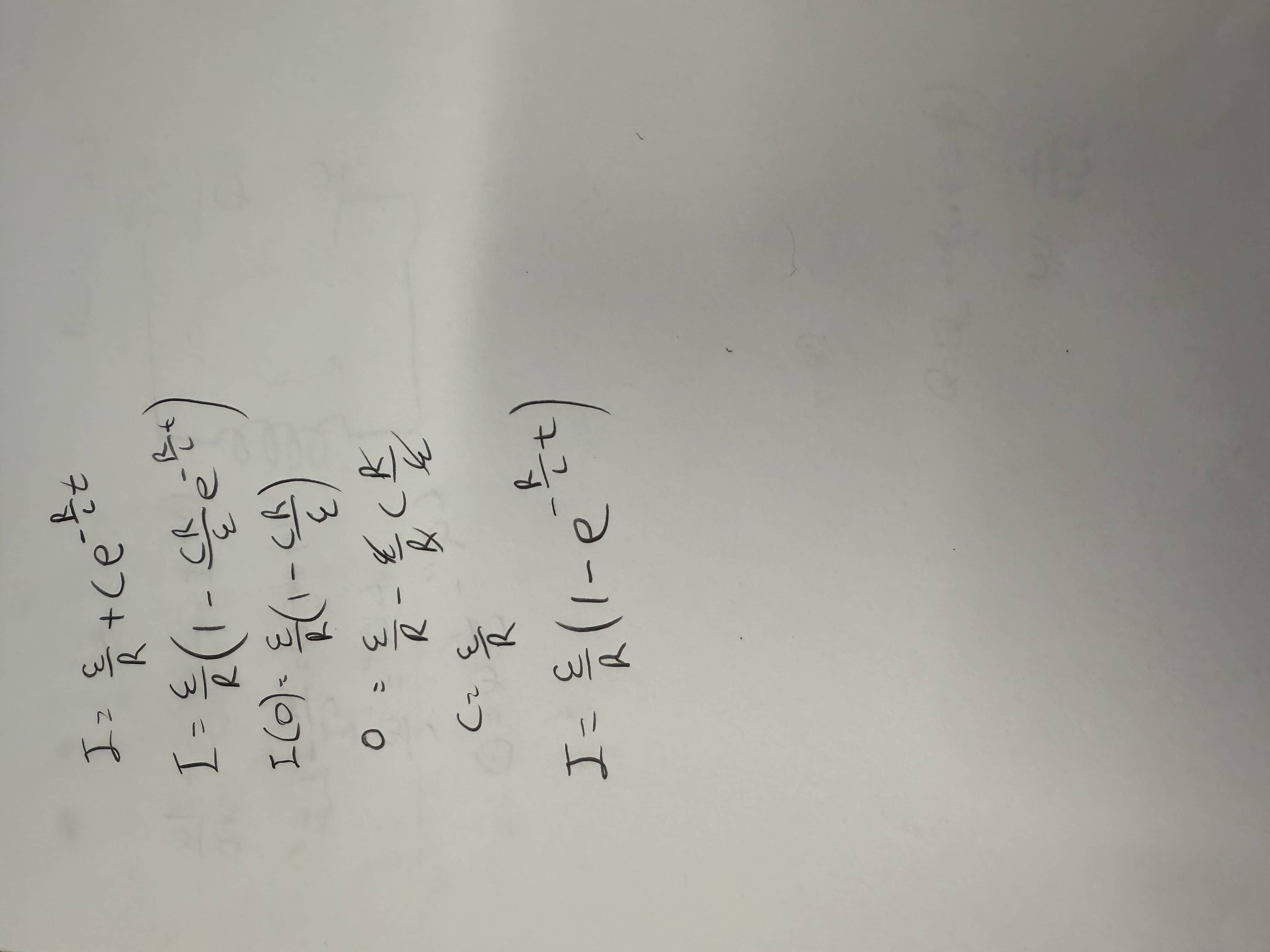
- LR circuits
- time constant
- energy stored
Discharging
Deriving LRC Circuits
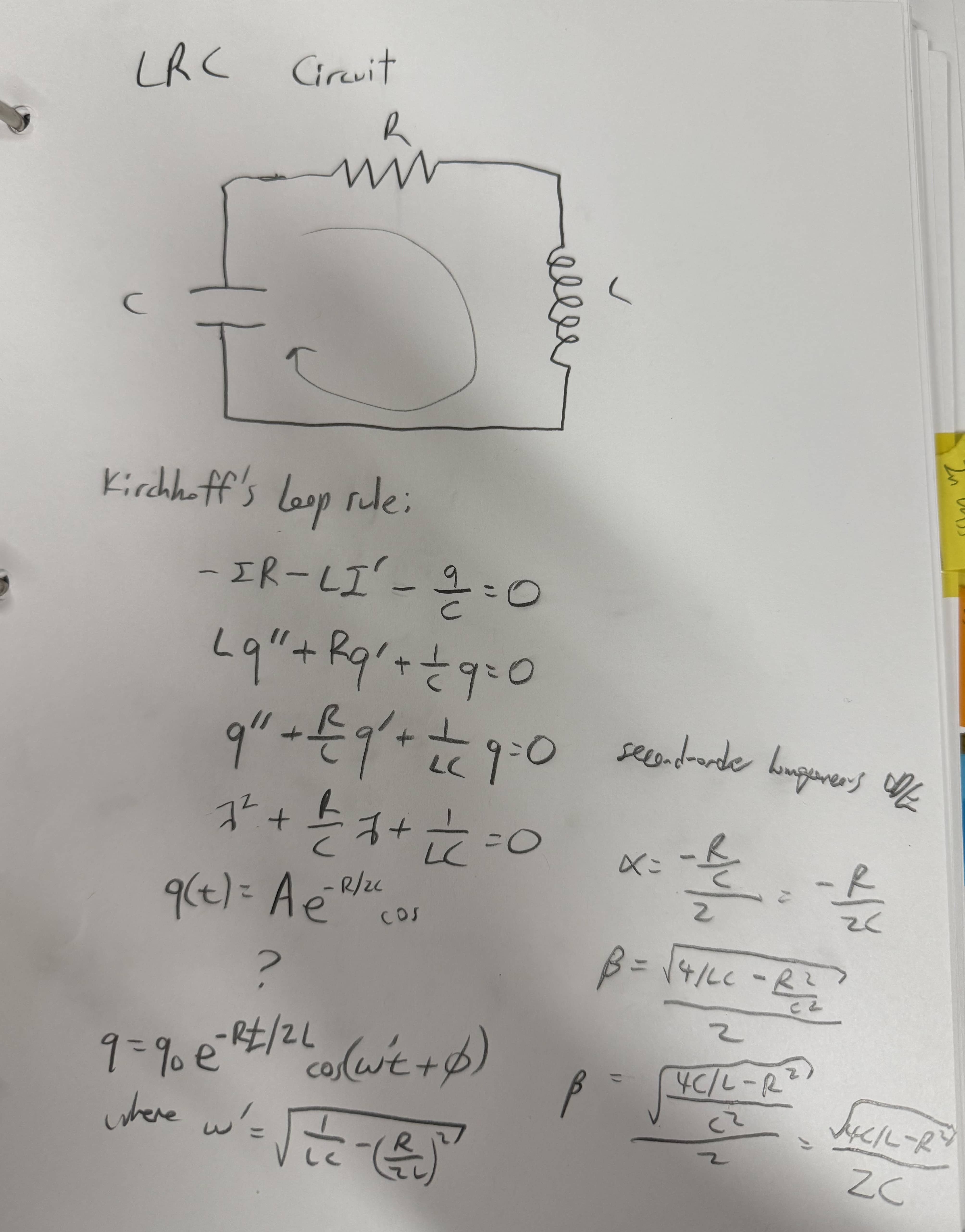
Deriving RC Circuits
Charging
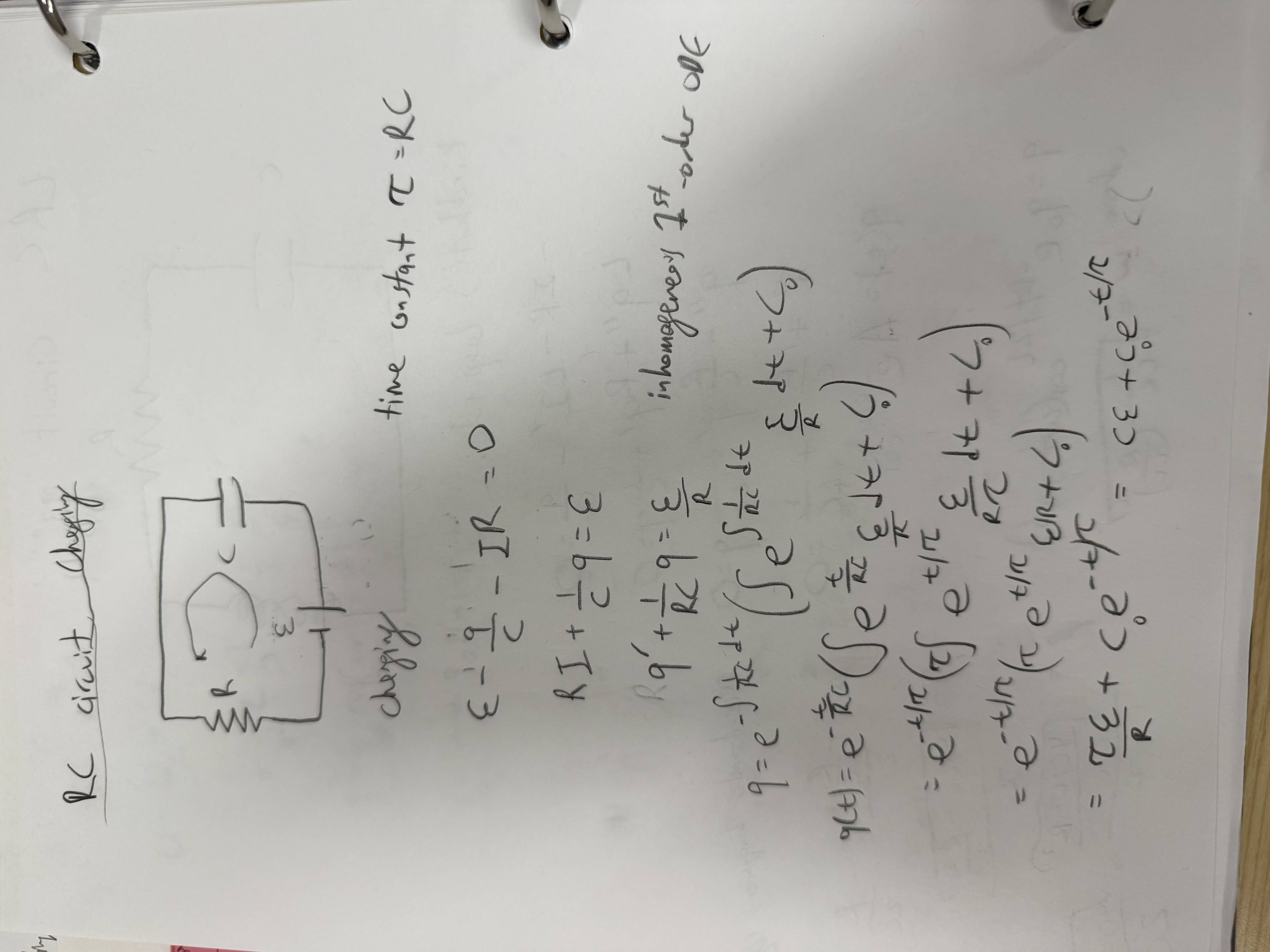
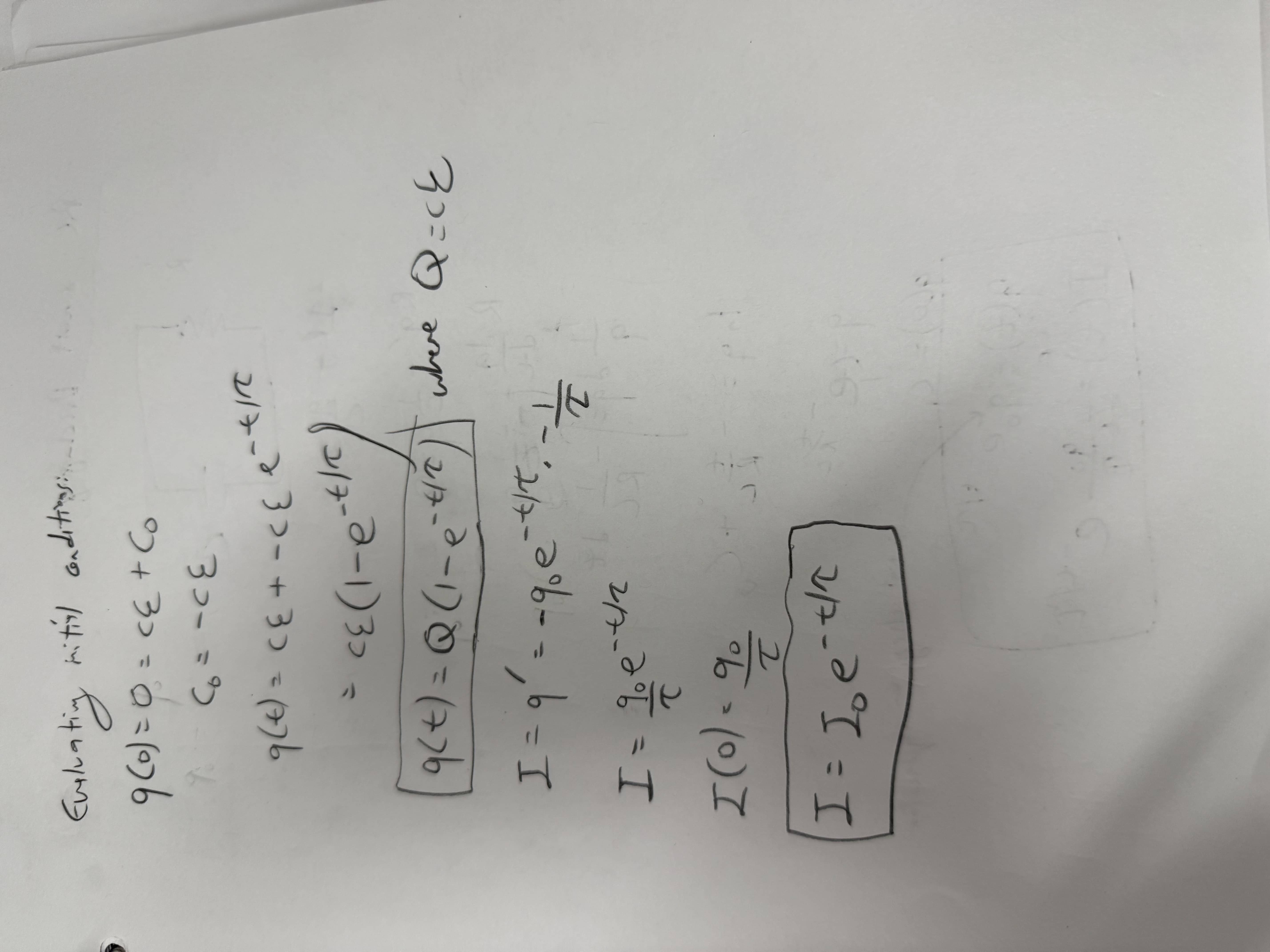
Discharging
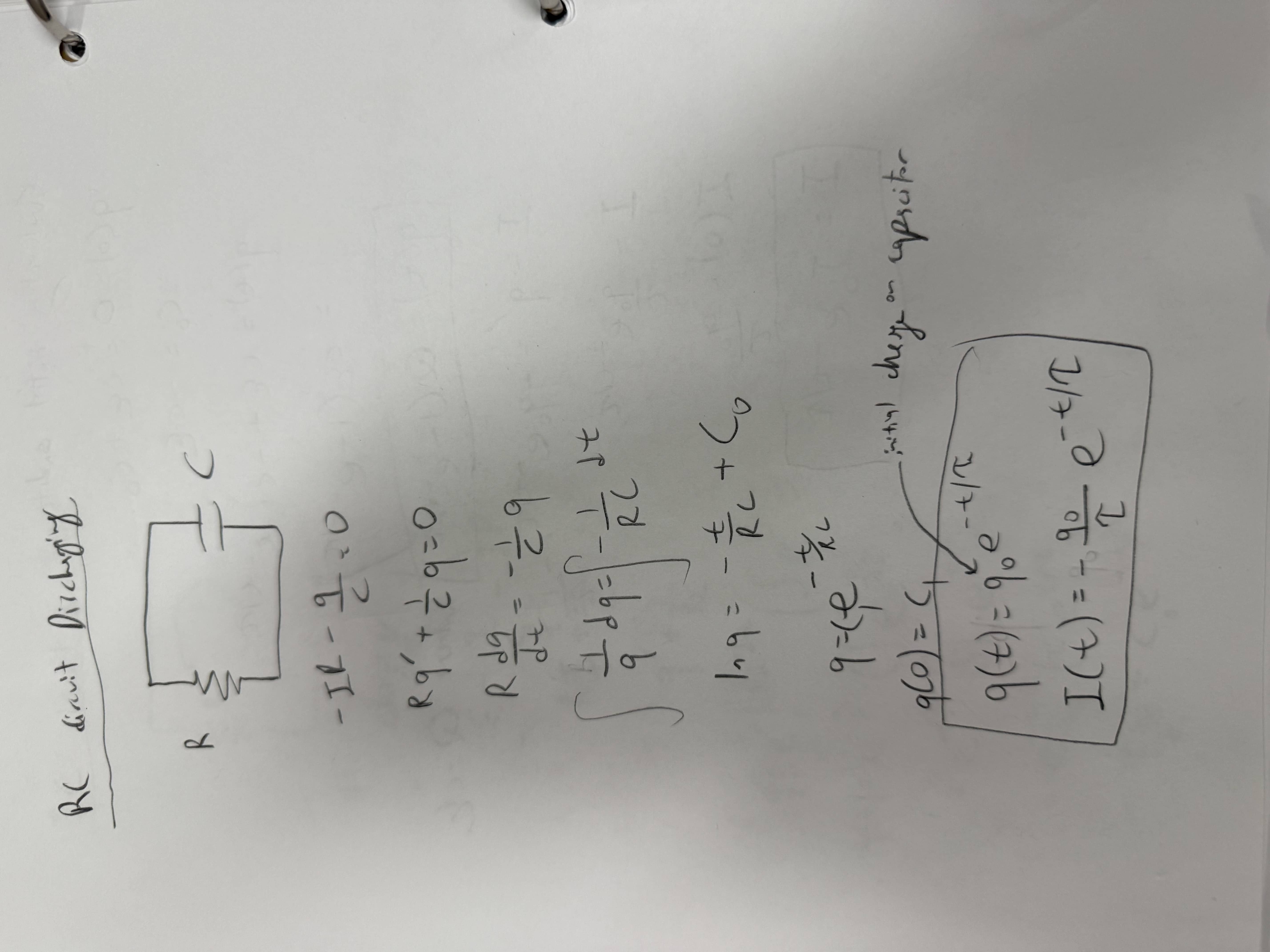
Deriving
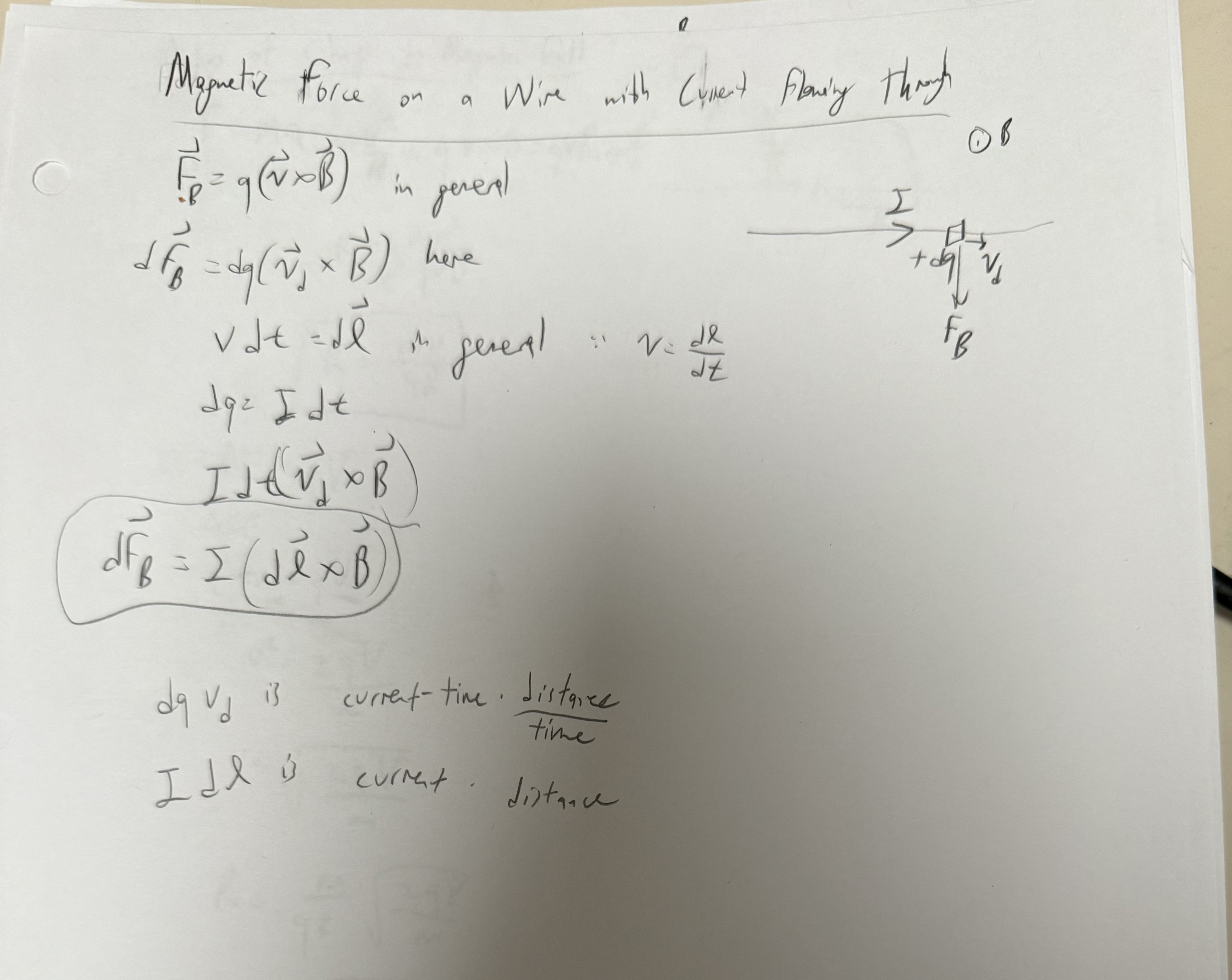
Deriving Radius of Charge in Magnetic Field
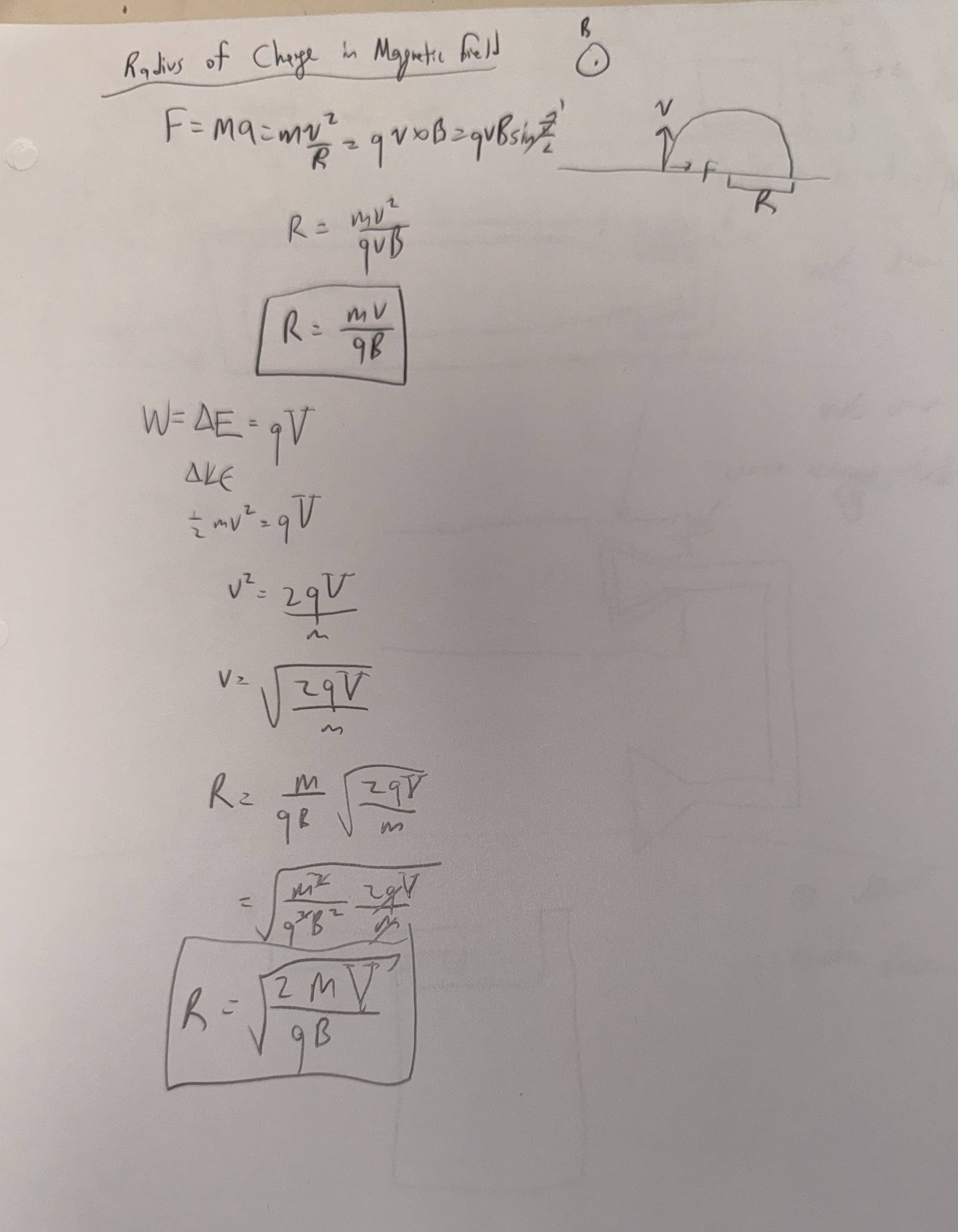
Deriving Capacitance for Series & Parallel Capacitors
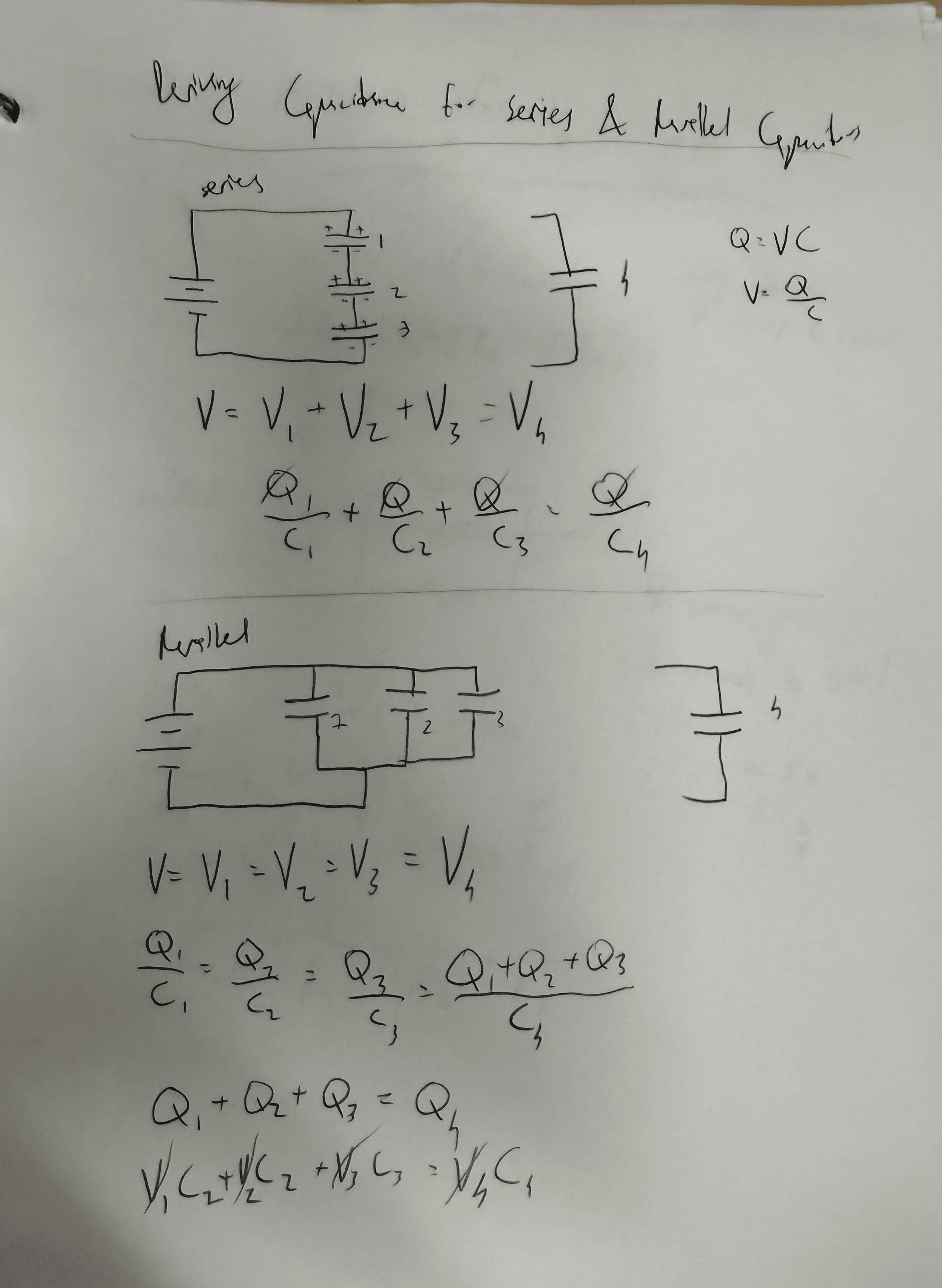
Deriving Resistance for Series & Parallel Resistors
